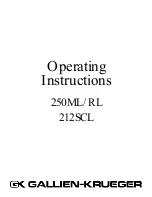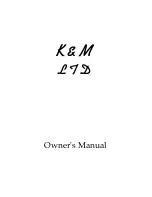
Page 49
Page 48
Reference Manual
Reference Manual
CE 4000
The amp with an Attitude!
CE 4000
The amp with an Attitude!
Fig. 6.1
CE 4000
Amplifier Block
Diagram
(Shown with
Standard Input
Module)
used for low to moderate duty work. If the amplifier is deliver-
ing large amounts of power into low impedance loads, the
heatsinks or transformer may heat up enough to increase the
speed of the fan to medium and possibly to high speed. If the
temperature continues to increase, the TLC circuit uses the
compressor to reduce the gain of the input stage and thus
reduce the power dissipated by the amplifier. As a further pro-
tective measure, if the temperature continues to rise (due to
blocked airflow for example), the amplifier will stop running
and keep the fan on high speed to quickly bring the tempera-
ture back to an operational level.
If a signal presented at the input of the amplifier will not be
passed through to the output, the Fault LED will blink to get
your attention. The turn-on delay, for example, will cause each
channel’s LED to blink because the amplifier remains in
standby for a few seconds before it allows audio output.
A modular jack is mounted on the back panel (same type as
used on telephones). Pins 2 and 5 are connected to an opto-
isolator that is always in a low-resistance state whenever the
unit is on and happy. Should a fault be detected or should the
amplifier lose AC power, the opto-isolator will change to a high
resistance, allowing the user to remotely detect the status of
the amplifier.
The Signal Presence Indicators tap the signal chain just before
the level controls and prior to the power amplifier chain. They
are
not
amplifier output indicators and should only be used to
indicate the presence of signal to the amplifier front end.
The Clip light is driven from the output of the compressor cir-
cuitry and lights to indicate the onset of audible distortion. The








































